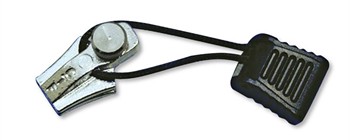What’s the difference? What’s the weakness?
Question from a fan:
Hi Jeffrey, I just purchased your new book on the 21.5 Unbreakable Laws of Selling. As usual, it’s full of amazing content. But as I read it, it generated three compelling questions I hope you can answer. Thanks, Brandon
1. What is the biggest difference between selling today and 10 years ago?
Three things have changed selling (and buying) forever – THE INTERNET, SMARTPHONES, and SOCIAL MEDIA. The Internet sells trillions annually, and it does it 24-7-365. Customers can investigate, shop price, compare prices and values, and buy with one click – anyplace in the world. Social media is the largest one-on-one sales reference on the planet, and like the Internet, it’s keeping business (and salespeople) honest. And it’s making smarter customers. Smartphones have created access. Ultimate and instant access. Apps are the new Internet. And the combination of these three elements has changed the face and manner of doing business – forever.
NOTE WELL: You can only SELL at your place – but customers can BUY anyplace in the world – any time of the day or night.
What has changed is that salespeople HAVE NOT CHANGED. No personal website, no personal brand, no social media interaction, and not taking advantage of smartphone technology.
ADVICE: Get heavily involved with the Internet. Make sure it serves your customers, not just your company. Get heavily involved in social media, and don’t just post – respond to comments, concerns, and praise. Use your smartphone to study your marketplace, transact business, and post on social media. ASK YOURSELF THIS: Is it easier to find and do business with you, or your competition? Got app? If not, invest whatever is needed in people and money to set and maintain a leadership position in all three areas.
2. Why “21.5” unbreakable laws and not more or fewer?
I started with more than 50 laws that I had written and compiled over the years, and after weeks of study and deliberation, I pared it down to 21.5 through combination and elimination. These are THE hard-and-fast laws of selling. They cannot be broken, unless you’re willing to lose sales. These laws form the foundation for your selling success and your personal success. CAUTION: They are NOT rules. They are LAWS. Rules can be bent or broken, but laws remain steadfastly the same. BIGGER CAUTION: Reading the laws once will not make you great – re-reading, studying, and implementing them day-by-day will.
3. What are the biggest mistakes salespeople make today?
I have interacted with hundreds of thousands of salespeople – that’s how my 21.5 Unbreakable Laws of Selling came about.
During my continuing journey, I have seen 3.5 flaws that are common to all weak salespeople. Not necessarily “mistakes,” like asking the wrong questions. Rather, blunders and errors in judgment and thinking that causes failure…
1. Lack of belief in what they sell, who they represent, and in themselves. Lack of belief shows up in your presentation and is evident to the prospect. ADVICE: Visit customers who LOVE your product and have been loyal to you for years. Talk to them about WHY they have belief. It will strengthen yours.
2. Lack of love of what you do. If you have “hate” or have ‘no passion’ for or about what you do, you’ll never give it full effort, and you’ll always be looking for greener pastures. “They don’t pay me enough” will ALWAYS be your mantra. Your attitude will suffer more that your sales. (If that’s possible.) ADVICE: Find a job you love before you’re fired from the one you don’t.
3. Blaming everything and everyone for what goes wrong or what didn’t happen, rather that taking responsibility for what happened, and adding personal responsibility for making things happen.Seems so obvious, yet it’s one of the biggest missing elements of sales (and society). ADVICE: Responsibility starts in the bathroom mirror in the morning. Look, smile, and commit. Next, check your language. Negative talk is usually blame talk. Avoid it. Get a partner to stop you when you start. This is one of the biggest challenges in sales and life. CAUTION: The media is blame-ridden, and the more you expose yourself to it, the more you are likely to play the game yourself. Turn off the negativity. Turn on your life.
3.5 Weak resilience. Rejection occurs 74% more than acceptance. Salespeople, especially those forced to make cold calls, weaken and bow out way too soon.
There are many more mistakes made by salespeople – too many to list here for sure – BUT many sales shortcomings can be reduced or eliminated completely, simply by taking responsibility and purchasing the 21.5 Unbreakable Laws of Selling – and putting the laws into action.
Reprinted with permission from Jeffrey H. Gitomer and Buy Gitomer.
About the Author


 “The person who says it cannot be done should not interrupt the person doing it.”
“The person who says it cannot be done should not interrupt the person doing it.” FixnZip
FixnZip StrategyDriven Contributors tested the FixnZip product and found it to be a very easy-to-use replacement for broken and/or missing zipper sliders. As frequent travelers, we often damage or lose zipper sliders from suitcases. FixnZip provides a durable replacement slider enabling on-the-go repair of the suitcase and alleviating the need to buy an expensive replacement case.
StrategyDriven Contributors tested the FixnZip product and found it to be a very easy-to-use replacement for broken and/or missing zipper sliders. As frequent travelers, we often damage or lose zipper sliders from suitcases. FixnZip provides a durable replacement slider enabling on-the-go repair of the suitcase and alleviating the need to buy an expensive replacement case. Kai Hammerich received his M.B.A. from Northwestern University, Kellogg Graduate School of Management and his M.Sc. in economics from the University of Aarhus, Denmark. Based in London, he is a consultant with the international search firm Russell Reynolds Associates. Kai has conducted numerous CEO and board-level assignments for major global companies. He has in-depth experience advising clients on how to align a company’s talent portfolio with its overall business strategy and company culture. Kai has been nominated by BusinessWeek as one of the most influential search experts worldwide.
Kai Hammerich received his M.B.A. from Northwestern University, Kellogg Graduate School of Management and his M.Sc. in economics from the University of Aarhus, Denmark. Based in London, he is a consultant with the international search firm Russell Reynolds Associates. Kai has conducted numerous CEO and board-level assignments for major global companies. He has in-depth experience advising clients on how to align a company’s talent portfolio with its overall business strategy and company culture. Kai has been nominated by BusinessWeek as one of the most influential search experts worldwide. Richard D. Lewis is a renowned British linguist and founder of Richard Lewis Communications – a language school for executives as well as a company that advises on cross-cultural business issues. He is the creator of the Lewis Model of Cross-Cultural Communication and author of many books including the bestselling When Cultures Collide: Leading Across Cultures.
Richard D. Lewis is a renowned British linguist and founder of Richard Lewis Communications – a language school for executives as well as a company that advises on cross-cultural business issues. He is the creator of the Lewis Model of Cross-Cultural Communication and author of many books including the bestselling When Cultures Collide: Leading Across Cultures. Over time, organizational performance measurement systems can grow to include hundreds if not thousands of individual metrics. While each metric contributes some value in establishing the overall picture of performance, not all metrics offer equal value in doing so. Some metrics contribute so little value that they may be more costly and distracting than their value warrants. Consequently, executives and managers should consider eliminating these measures from the overall system.
Over time, organizational performance measurement systems can grow to include hundreds if not thousands of individual metrics. While each metric contributes some value in establishing the overall picture of performance, not all metrics offer equal value in doing so. Some metrics contribute so little value that they may be more costly and distracting than their value warrants. Consequently, executives and managers should consider eliminating these measures from the overall system.